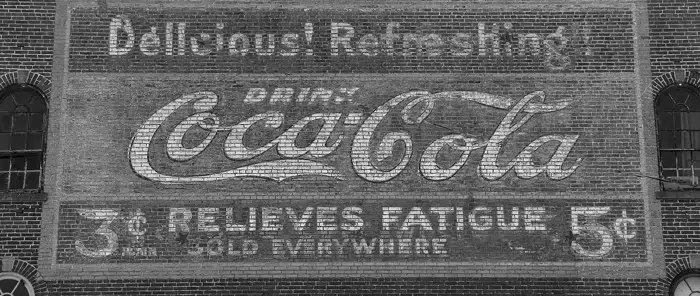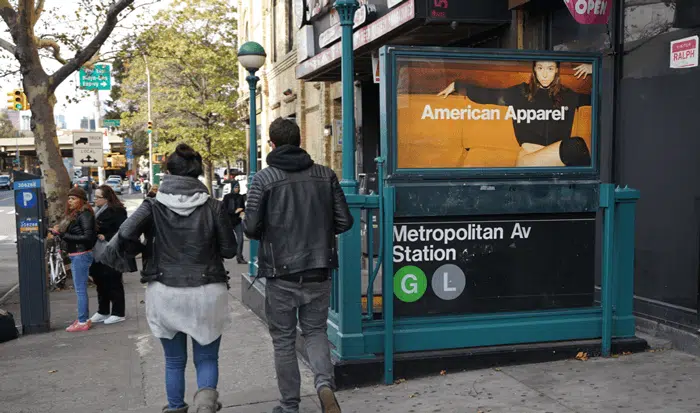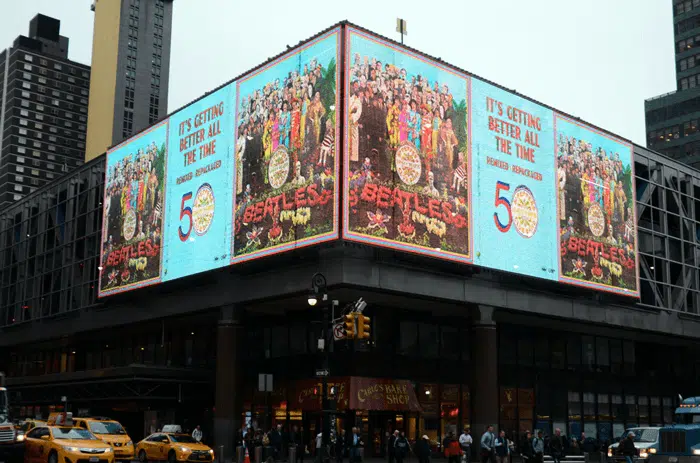“Jane,” a buyer at a mid-sized agency in the Midwest, contacts an outdoor vendor to purchase billboard space for her client, a retailer running a time-sensitive promotion.
Days go by before Jane hears back from the vendor. When they finally connect, she requests a picture of the board. Days later, she receives an outdated Google Maps image, timestamped from years prior. Frustrated by the delay and lack of accurate information, Jane decides to visit the location herself.
After navigating through heavy evening traffic, Jane arrives only to find two of the billboard’s lights burnt out, rendering the creative difficult to see at dusk. Disheartened, she realizes the hassle could have been avoided if the vendor had maintained up-to-date records and regularly checked on its inventory.
Unsurprisingly, Jane decides against making the buy. Unfortunately, many of us in the outdoor industry have been “Jane” at some point.
Despite its current boom — outdoor advertising is the only traditional media channel experiencing ad spending growth — the technology supporting the industry has lagged behind advancements seen in other media. Consider the following challenges:
- While digital, TV, and radio have used programmatic buying platforms for years, outdoor advertising has only recently embraced the concept, and many smaller vendors have yet to enter this space.
- Some vendors and agencies still rely on Excel sheets for tracking inventory and campaigns, avoiding more sophisticated software that would streamline collaboration and data sharing.
- Although the Big Three — Clear Channel, Lamar Advertising, and Outfront Media — have modernized their websites, many smaller vendors and OOH agencies operate with outdated digital infrastructures, resembling designs from the late ‘90s.
This isn’t to throw stones. At DASH TWO, we strongly believe in the transformative power of out-of-home (OOH) advertising and the incredible results it delivers for our clients. Our aim is to see the industry evolve for the better.
After countless discussions about the disconnect between technology and OOH, we sought answers. We consulted industry forecasters, media buyers, vendors, and even individuals who left the business due to the frustrations outlined here.
The insights we gathered highlighted how the industry arrived at this point and why there’s reason for optimism. As Mark Boidman, managing director at PJ SOLOMON, explained, “As technology improves and static boards convert to digital, technology is only going to help the industry, making it more relevant and easier to buy and sell.”
Here are 10 reasons for the technology lag in OOH advertising and why there’s hope for change on the horizon.
1. There’s No Driving Force to Make People Change the System
Generally speaking, things change for a reason. If you don’t need new tires, you’re not going to spend $1,500 on them when your car will pass inspection with the old tires. So it is with the out of home industry, says one industry veteran from the South.
“A lot of people have made a lot of money in the industry the way it is right now,” he says. “Why would they want to change it?”
Indeed, in 2017, ad spending was up 1.2 percent for OOH, compared to a 2.7 percent decline for TV and double-digit percentage drops for newspapers and magazines. If business keeps rolling in, there’s no catalyst to do things differently.
As an NYC ad executive who has been in the business for more than two decades put it, “Out of home advertising is in a renaissance, so you are going to get major change over time as it is needed, not just by flipping a switch and making it happen.”
2. Many Advertisers Are Local and Do Business on a Handshake
Small vendors, who tend to lag the farthest behind in technology, receive business from agencies but also from the people they know around town. Our industry veteran in the South notes that for many of these vendors, 80 to 85 percent of business is local. It comes from the woman who does your hair at the salon or the guy who sells you a car at his dealership.
“They know where the billboard is on Main Street, and you don’t need to email them a picture or get them traffic numbers,” he says. “Why go into that investment of time and money when your audience already knows what it is and what the traffic counts are from driving past it every day?”
Of course, this puts agencies in a sticky position when they want that information for clients and the vendor isn’t used to supplying it. That can lead to deals falling through and frustration on both the client and vendor ends.
3. The Industry Is Old
Can we be blunt? There are a lot of older people on the vendor side. That’s great, because they bring a lot of experience to their jobs and have a ton of knowledge that we can all benefit from.
But sometimes when you have done things one way for a very long time, you become resistant to change. That can create tension on the media side. The entry-level people in media grew up with tablets and smartphones, points out our NYC ad exec. They throw around terms like “geo-targeting” and “data” in casual conversation.
Thus you end up with a digital gap that’s intensified by a generation gap. “Trying to appease those learning the new business but who only know the things on their phone and appeasing those who are in the know because they’re in the business already is not an easy task,” says the exec.
“The bigger companies like Lamar and Outfront are bringing in young people, but the independents, the fifth-largest company and lower, there is an age difference there,” says a woman who worked for a top-10 vendor.
As Boidman at PJ SOLOMON notes, “Jeremy Male, the CEO of Outfront, was recently quoted as saying you still need to use a fax to buy out of home, so the systems are a little outdated. Younger people who are becoming buyers, they don’t even know how to fax. But everyone is investing in technologies and setting up new formats.” Boidman adds, “I would also note Jeremy’s firm is on the cutting edge, which is demonstrated by his firm’s recent earnings result with double-digit growth.”

4. There’s Too Much ‘Hurry Up and Wait’ on the Agency Side
We know that vendors have some legitimate gripes, too, that can lead to issues with adapting new technology.
Agencies want everything yesterday. One current vendor says the phrase “hurry up and wait” applies to every agency he’s ever worked with. They want information about a possible buy right away, and when he scrambles to get that to them within a few hours, he won’t hear back for weeks — only to be met with another “must-have” request.
“Turning things around quickly like that puts a wrench in everything else you were doing, and even if we do cartwheels and get those things out, we never hear back from anyone. It’s a lot of work for something you may not make money off of,” he says. And so the thought of investing in technology that may not pay off seems risky for vendors. Why chance it when the old way produces the same money? This will start to change when it … doesn’t.
5. Everyone Plays Follow the Leader
As Boidman notes, the Big Three vendors control two-thirds of the billboard inventory, and so they have to take the lead in developing and adopting technology. “They have been a little bit slow to adopt technology, but they are adopting in big ways and moving quickly now,” he says.
Eventually, the smaller vendors will follow. “I think the rest of the industry will move along after that. They need to know that the Big Three are actually implementing it. They will use them as a model.”
Boidman predicts that lag will be short, roughly 12 to 24 months. Wider deployment of programmatic buying will force a lot of changes in the industry, and this automated marketplace will change the playing field for both buyers and sellers.

6. Vendors Want to Develop Their Own Programmatic Programs
Boidman notes that right now, the Big Three vendors are developing their own programmatic software, which means there are different exchanges. Down the line, he envisions a universal platform emerging for programmatic, but right now the vendors are working separately and each hiring their own third-party engineers for development.
The smaller players don’t have the money for that type of investment. They will wait it out to see what emerges.
There are innovative companies making good progress in this area:
- A few years ago, DOMedia launched a database for out of home advertising aimed at automating the process of buying and planning out-of-home campaigns, and it’s made strides, with over a million assets on its platform.
- AdQuick, another exchange, arose out of frustration with the industry’s “opaque” buying process. It allows you to see locations of billboards and book them online.
7. The Future of Billboards Is Digital
The number of digital billboards in the United States has soared, growing from 6,400 to 8,100over the past two years alone. That number will continue to expand, which means greater opportunity for income for billboard owners, who can run six to eight advertisers on a single board vs. one for static.
And as digital becomes more widely adopted, vendors will see the advantages of implementing better technology. There will be greater competition for business, which will necessitate more sophisticated approaches. “Once small vendors see the capabilities of digitalization, they will realize investing in technology becomes more economical,” predicts one local media forecaster.

8. Vendors Want to Retain Certain Advantages
Over the years, there has been discussion of developing a universal database of billboard inventory that agencies could consult to find the right fit for their clients. That certainly seems like a technological development agencies would welcome. But it looks like that will remain just talk for now.
“That’s been heavily debated at conferences,” Boidman says. “It’s a lesser priority because the Big Three don’t want to share. They see it as a competitive advantage to have their own tracking of inventory, so I think that’s quite a ways away.”
9. Some Billboard Owners Just Don’t Care
We’ve all seen the boards along the road hidden by bushes or tree branches that look like their owners forgot about them. That may as well be true.
Some signs were erected on land a farmer had no other use for and figured they might as well make passive income off a little signage. “They don’t care about the billboards, they put them up a long time ago and now they’re in disrepair,” says the local media forecaster. “It mystifies me when I see they’re so outdated, because these billboards could be tremendously profitable if they just put some profits into lighting the sign appropriately and trimming the grass.”
10. There’s a Lot of Data, But Not a Lot of Agreement on How to Use It
These days, everyone is drowning in big data. Great, right? Well, not if agencies, vendors and advertisers don’t know how to use it to their advantage. While everyone has the tools available, they’re out of sync right now on what’s important.
“Smoke and mirrors exist with people trying to tell people what they think they want to hear,” says the NYC exec. “Technology and data help drive that — not enough people talk about good data vs. bad data.”
In time, they’ll figure it out. For now, it’s perhaps another case of hurry up and wait.
At the end of the day, everyone in out of home will benefit from the greater deployment of technology throughout the buying and selling process. It’s just a matter of finding the right way to get there. While we recognize these barriers, we think it can be done. We’ll be keeping tabs on how it goes.


Digital boards. Great for the OOH companies, not great for the advertisers.